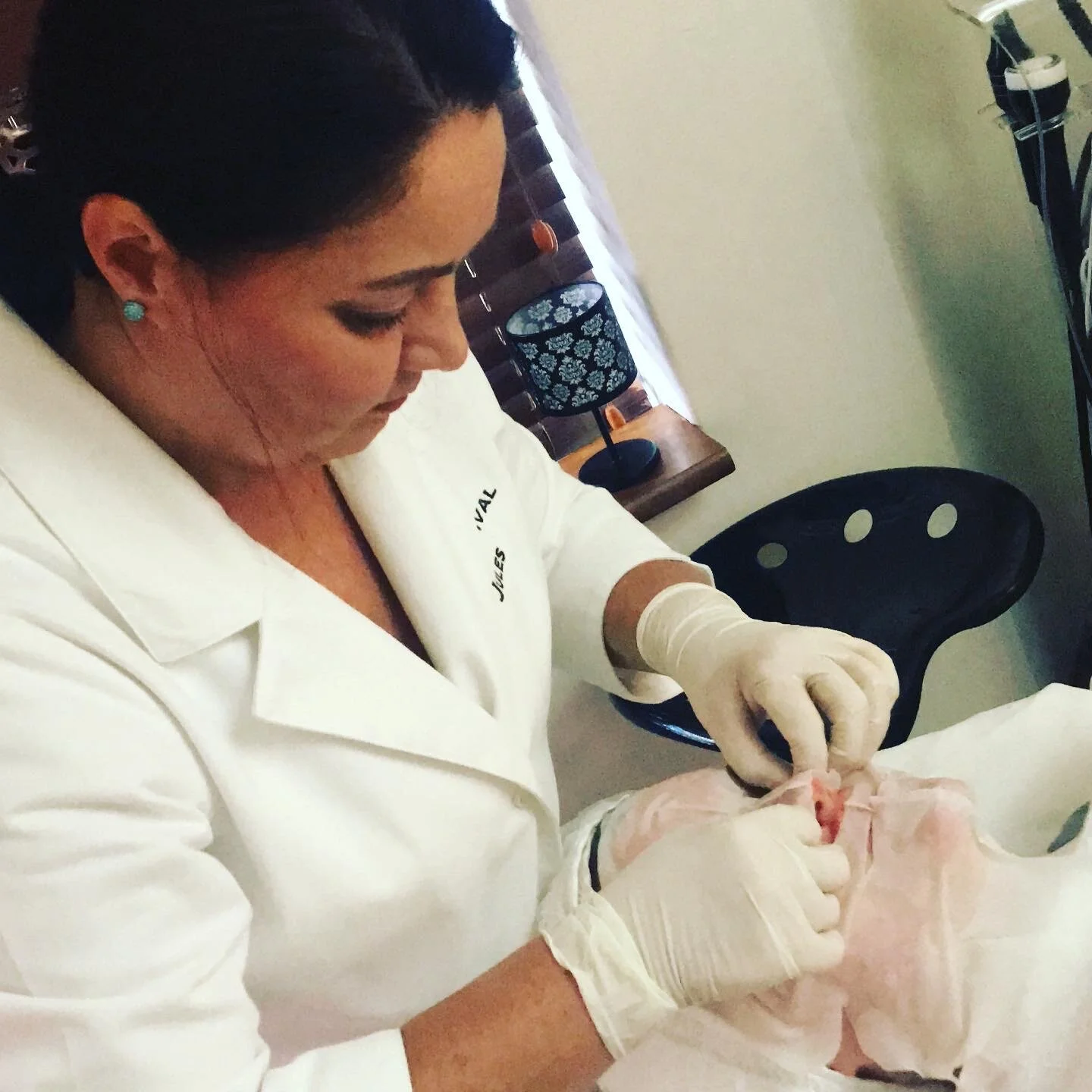About Botox
1. Botox doesn’t actually erase wrinkles
Since Botox is, of course, a treatment for wrinkles and fine lines, you would think that the injections would erase those unwanted imperfections.
But as it turns out, for most patients, Botox is more preventative than restorative. Its active ingredient “freezes” facial muscles to keep you from contracting them in ways that deepen lines and wrinkles.
“Any line that is present at rest, whether it is an etched in frown line, or a deep wrinkle, is not going to disappear with Botox. Botox is not an iron,” says medical, cosmetic, and surgical dermatologist Dr. Estee Williams, MD.
2. It’s temporary (more temporary than I thought)
Some people think that Botox is going to be a one off treatment. But this simply isn’t true.
“The average duration for Botox for glabella [the lines between the brows], forehead, and lateral crows’ feet is approximately three to four months. And there are certain factors that may make Botox fade faster.
“Patients who exercise a lot or who are very expressive may feel that the Botox lasts closer to three months,”
3. It does hurt (for a little while, at least)
While experiences vary, most peopl find that the multiple injections are significantly more intense than the “mosquito bite” pinprick they are led to believe. Most peopl felt pain for at least half an hour after the injections.
They were also unprepared for the sound the syringe made as it plugged its contents into their skin: like crunching boots on snow or the signature crack of bending a glow stick. (Not a sound you normally want applied to your head.) Thankfully, however, this disturbing auditory aspect lasted just a few seconds.
4. There are certain things you can’t do afterward
Your doctor will instruct you that, for the next six hours, do not to exercise, lie down, or take Ibuprofen (or any other blood-thinning medications), which could increase bruising at the injection sites. Also, Immediately after your Botox injections, keep your head level and do not bend your head forward for two hours. No heavy exercise until the next day.”
Is Botox Poisonous?
Here’s What You Need to Know
Medically reviewed by Catherine Hannan, M.D. — Written by Emily Cronkleton — Updated on May 1, 2018
What is Botox?
Botox is an injectable drug made from botulinum toxin type A. This toxin is produced by the bacterium Clostridium botulinum.
Although this is the same toxin that causes botulism — a life-threatening form of food poisoning — its effects vary according to the amount and type of exposure. For example, Botox is only injected in small, targeted doses.
When injected, Botox blocks signals from your nerves to your muscles. This prevents the targeted muscles from contracting, which can ease certain muscular conditions and improve the appearance of fine lines and wrinkles.
What are the side effects to watch for?
Although Botox injections are relatively safe, minor side effects are possible. These include:
Some side effects are tied to the area of injection. For example, if you receive injections in the eye area, you may experience:
drooping eyelids
uneven eyebrows
dry eyes
excessive tearing
Injections around the mouth may result in a “crooked” smile or drooling.
Most side effects are usually temporary and should fade within a few days.
However, drooping eyelids, drooling, and asymmetry are all caused by the unintentional effects of the toxin on muscles surrounding the target areas of the drug, and these side effects may take several weeks to improve as the toxin wears off.
In rare cases, you may develop botulism-like symptoms. Seek immediate medical attention if you begin experiencing:
difficulty speaking
difficulty breathing
vision problems
loss of bladder control
general weakness
The results of a 2015 review suggest that adverse effects may appear after the 10th or 11th injection.
For example, researchers in one included studyTrusted observed 45 participants over the course of 12 years. The participants regularly received Botox injections.
During this time, 20 cases of adverse side effects were reported. These included:
difficulty swallowing
drooping eyelid
neck weakness
nausea
vomiting
blurred vision
general or marked weakness
difficulty chewing
hoarseness
edema
difficulty speaking
heart palpitations
More research is needed to understand the potential long-term effects.
personally I think that there are better options available, such as the non surgical facelift, using radio frequency technology to improve your skins elasticity.
Skin needling is also a great alternative to Botox and can not only increase your collagen production but improve your skins overall appearance, eliminating lines, wrinkles, pigmentation, acne and enlarged pores.

